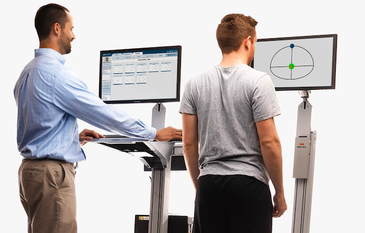
Dizziness is one of the most common vestibular disorder. It is a condition that makes you feel dizzy, unstable or wobbly, as if you were moving, spinning, or walking on an unsteady surface. It commonly affects people suffering from concussion, vertigo, Meniere’s disease, labyrinthitis or other form of infection/inflammation, or even a spinal cord disorder.
Why does that happen?
The eyes constantly adapt so that our vision stays in focus when we look at a target. Our inner ears act as a line level tool and help us to maintain our vision at a horizontal plan when we move our head. And finally the proprioception is what helps us to have a body awareness: it made of many sensors in our muscles, ligaments and joints that indicate our body position and movement.
All of those 3 systems (visual, inner ear and proprioception) provide individual feedback that travel through nerve fibers towards our brain and then merge together into the vestibular center of the brain. Once there, it gives us a representation of where we are in relation with the environment that surrounds us. Now let’s say that one of the 3 systems is not working well, whether it is due to a head injury or anything else than can cause an interference in the signals, you will have a mismatch between the actual position of your body in the environment and the representation within your brain of your position. That mismatch is what causes the balance disorder, which will manifest with dizziness, double/blurry vision, unsteadiness, etc…
What can be done?
Often the advice from doctors is to rest, drink water and sometimes take anti-histamine or anti-cholinergic medication, which basically paralyzes nerve impulses in the hope of suppressing that feeling of dizziness. Thankfully, it now exists new options that show promising results. Among them, computerized posturography is becoming popular. It usually consist of a balance platform connected to a screen that displays your center of gravity in real time. That platform can be extremely sensitive and a very small movement of your body can be recorded and shown on the screen. From there, you can give the patients many exercises, for instance trying to move your center of gravity into a certain position that is displayed on the screen. Thus, this will retrain your visual and proprioceptive systems, adding to that an inner ear component to the exercise and you can literally retrain all of your balance systems, just like you would retrain a muscle after an injury.
In conclusion
In our clinic, we firmly believe that our brain is capable to adapt and recover if we put it in the right direction. Vestibular therapy and computerized posturography in particular is becoming a great tool to rehabilitate someone’s balance and can’t be ignored anymore.
